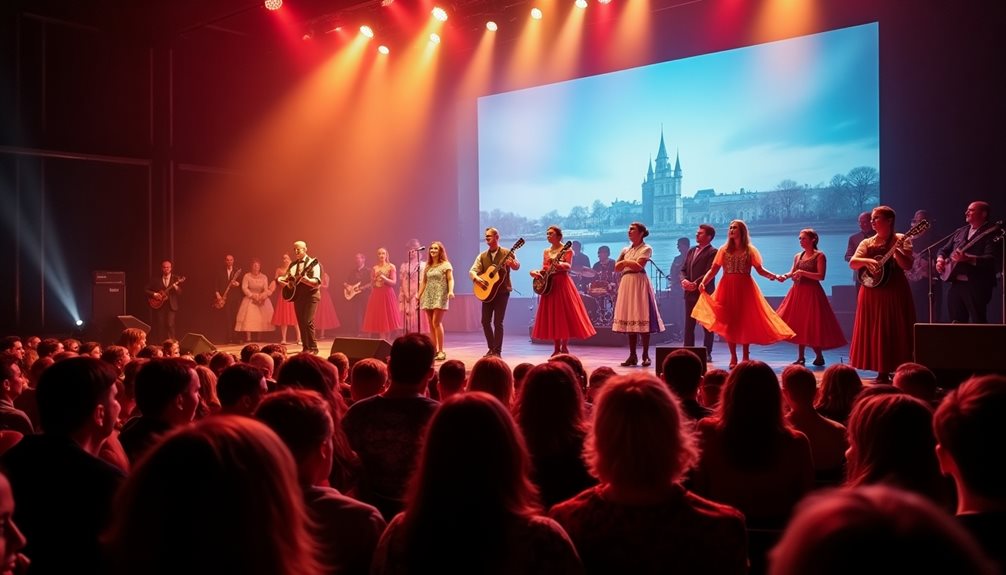The exploration of Russia’s unofficial national symbols reveals layers of cultural significance often overshadowed by official emblems. These symbols, from the enduring presence of the birch tree to the familial warmth represented by the babushka, illustrate a diverse national identity. Each emblem serves as a conduit for understanding resilience and continuity in Russian heritage. Yet, the deeper implications of these symbols extend beyond mere representation, hinting at a complex relationship between history and contemporary Russian society.
Introduction
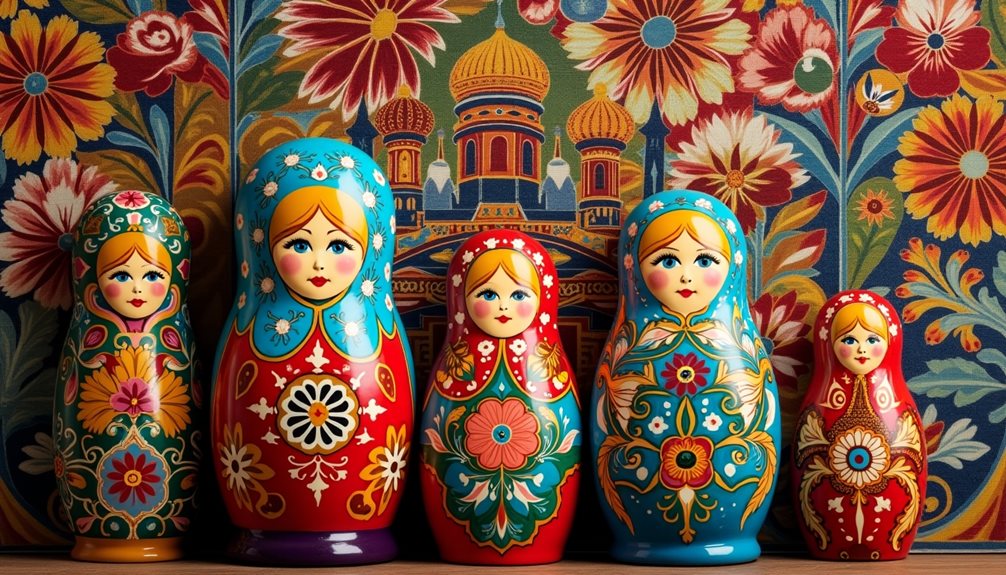
As one explores the intricacies of Russian identity, it becomes evident that unofficial national symbols play a pivotal role in shaping the nation’s cultural narrative.
Russian folklore, rich with tales of mystical creatures and heroic deeds, intertwines with traditional music that echoes through winter festivities, creating a vibrant cultural mosaic.
Urban landscapes, dotted with historical monuments and modern art, reflect the dynamic evolution of society.
Iconic literature, from Pushkin to Tolstoy, encapsulates the Russian spirit, revealing the depth of emotional and philosophical discourse.
Together, these elements illuminate a diverse identity, inviting deeper engagement with Russia’s multifaceted heritage.
Official Symbols of Russia
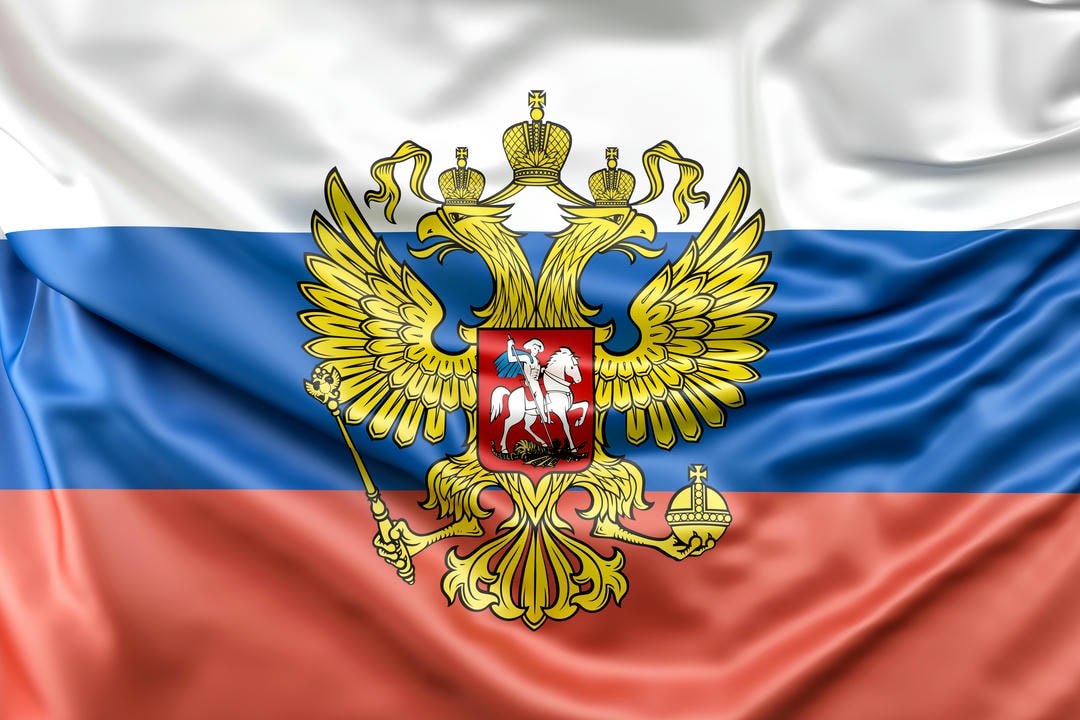
The official symbols of Russia, including the national flag, coat of arms, and the anthem, serve as formal representations of the country’s sovereignty and identity.
These emblems encapsulate Russia’s rich cultural heritage and reflect its complex national identity. The flag, with its tricolor design, symbolizes unity and the diverse folk traditions that permeate Russian society.
The coat of arms, featuring the double-headed eagle, signifies strength and resilience, while the anthem resonates with historical artistic expressions.
Together, these official symbols forge a connection between the past and present, reinforcing a collective pride and fostering a sense of belonging among citizens.
Importance of Unofficial Symbols
Unofficial symbols in Russia serve as essential cultural touchstones that enrich the national narrative and foster a sense of identity among its people.
These symbols, deeply intertwined with cultural identity and national pride, reflect the diverse heritage preservation efforts across the nation. They embody artistic expression, showcasing the creativity that characterizes Russian society.
Additionally, these symbols promote social cohesion, uniting individuals under shared meanings and experiences. By engaging with these unofficial emblems, Russians can connect with their past while steering through contemporary challenges, ultimately reinforcing a collective consciousness that celebrates both history and innovation in a rapidly changing world.
Cultural Symbols
Cultural symbols in Russia encapsulate the essence of its diverse traditions and collective memory, revealing the intricate weave of its society.
Significantly, Russian literature serves as a profound reflection of the nation’s soul, while folk music resonates with the rhythms of everyday life.
Orthodox Christianity, deeply woven into the cultural narrative, influences numerous customs and practices.
Traditional festivals celebrate agricultural cycles and historical events, fostering community bonds.
Cultural festivals further enrich this mosaic, showcasing art, dance, and culinary heritage, thereby affirming Russia’s commitment to preserving its multifaceted identity.
Together, these symbols illuminate Russia’s vibrant cultural landscape and enduring spirit.
Babushka and Family Traditions
Babushkas, or grandmothers, embody a significant aspect of Russian family traditions, symbolizing warmth, wisdom, and continuity. They serve as custodians of cultural heritage, imparting traditional values that strengthen generational bonds.
Family gatherings often revolve around babushkas, whose culinary skills and stories foster connection and unity. Through their grandparent wisdom, they bridge the past and present, ensuring that the lessons of history are not forgotten.
This role reinforces the importance of familial ties in Russian society, where the elder’s presence signifies stability and nurturing. In this way, babushkas remain central to the identity and continuity of Russian family life.
Ballet and Russian Arts
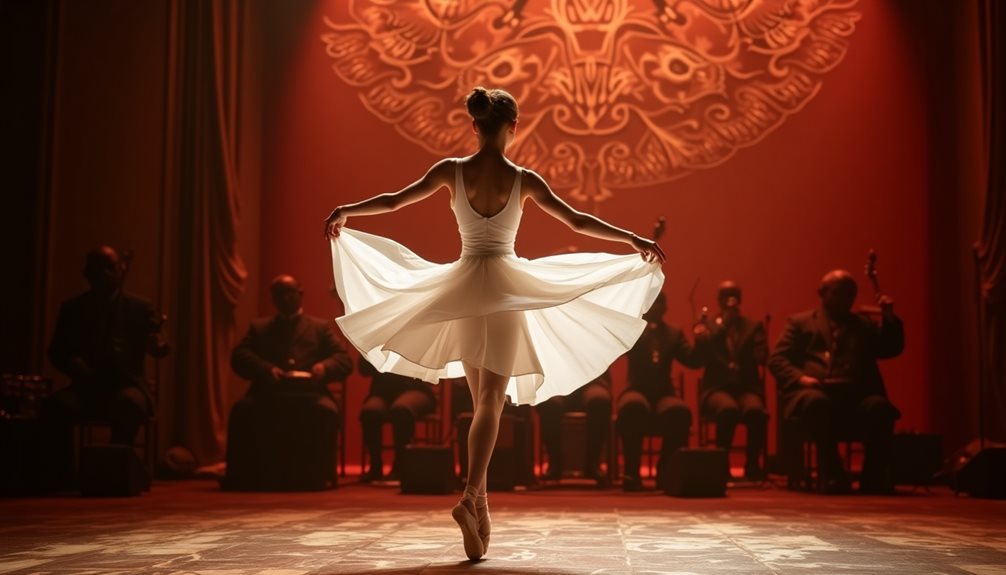
Ballet serves as a quintessential expression of Russian arts, encapsulating the nation’s profound dedication to performance and aesthetic excellence.
Renowned for its rigorous ballet techniques, Russian ballet showcases classical choreography that intertwines tradition and innovation. Famous ballerinas, such as Anna Pavlova and Maya Plisetskaya, have transcended boundaries, embodying the spirit of artistry.
Contemporary performances continue to evolve, reflecting societal changes while adhering to the deep-rooted cultural influence of their predecessors.
Through the lens of ballet, one witnesses not only the beauty of movement but also Russia’s ongoing quest for artistic freedom, resonating with audiences worldwide.
Matryoshka dolls
The intricate artistry of Matryoshka dolls, often referred to as Russian nesting dolls, serves as a compelling representation of the nation’s folk art and craftsmanship.
Emerging in the late 19th century, matryoshka history reveals a blend of traditional Russian values and artistic expression. Each doll, uniquely crafted, embodies matryoshka craftsmanship that showcases regional styles and cultural significance.
The variations range from whimsical designs to intricate depictions of folklore, enhancing their charm. As symbols of unity and family, matryoshka dolls have gained global influence, transcending borders and enchanting audiences, reflecting a shared appreciation for craftsmanship and cultural heritage.
Khokhloma and Traditional Crafts
Khokhloma, a vibrant and ornate style of hand-painted woodenware, embodies the essence of Russian traditional crafts. Characterized by intricate Khokhloma patterns featuring floral and berry motifs, this art form showcases traditional craft techniques passed down through generations.
Regional variations reflect distinct local histories and identities, enriching the overall cultural significance of Khokhloma. This craft not only serves aesthetic purposes but also symbolizes resilience and heritage.
In contemporary society, modern adaptations of Khokhloma continue to emerge, blending timeless artistry with innovative designs, thereby ensuring its relevance and allure in a rapidly changing world while celebrating Russia’s rich artistic legacy.
Culinary Symbols
Although often overshadowed by its grand historical narratives, Russian cuisine serves as an essential symbol of national identity and cultural richness.
The myriad of borscht variations showcases regional diversity, while Russian pastries exemplify the intricate artistry inherent in culinary tradition.
Traditional soups, often served with a hearty slice of rye bread, reflect communal values and the importance of hospitality.
Kvass culture, a staple fermented beverage, connects generations through shared experiences.
Culinary festivals across the nation celebrate these gastronomic treasures, fostering unity and pride among Russians.
Consequently, the culinary landscape becomes a vibrant mosaic, illustrating the essence of Russian heritage.
Bliny and Maslenitsa Celebration
Bliny, a traditional Russian pancake, serves as a central element in the vibrant celebration of Maslenitsa, a week-long festival marking the end of winter and the arrival of spring.
This joyful occasion showcases diverse bliny recipes, highlighting pancake variations filled with sweet and savory ingredients.
Maslenitsa traditions include communal feasting and playful activities, embodying the spirit of renewal and togetherness.
Celebratory dishes beyond bliny enrich the festive atmosphere, emphasizing seasonal changes.
As participants indulge in these culinary delights, they embrace not only the end of winter festivities but also the hopeful anticipation of a flourishing spring.
Borsch and Its Cultural Significance
The celebration of Maslenitsa, with its rich culinary traditions, paves the way for a deeper exploration of Russian cuisine and its cultural significance.
Borsch, a staple of Russian gastronomy, showcases numerous borsch variations influenced by regional recipes, each reflecting local ingredients and traditions.
Historically, this vibrant beet soup symbolizes nourishment and community, often featured in cultural celebrations.
Beyond its taste, borsch offers notable health benefits, including vitamins and antioxidants.
Its historical origins intertwine with Russia’s agricultural past, making it not just a dish but a cultural artifact, illustrating the interconnectedness of food, identity, and heritage within Russian society.
Caviar
Caviar, often regarded as the epitome of luxury within Russian culture, embodies both opulence and tradition. This delicacy is defined by sophisticated caviar production techniques, ensuring its exclusivity and high market value in global markets.
Traditionally served on blinis or with vodka, caviar serving traditions enhance its allure at social gatherings. Beyond its luxurious status, caviar boasts notable health benefits, including omega-3 fatty acids and essential vitamins.
Historically significant, it symbolizes Russia’s rich aquatic heritage and culinary artistry, reflecting centuries of refinement and cultural pride. Consequently, caviar remains a potent emblem of both wealth and Russian identity.
Russian Olivier Salad
Russian salad, commonly known as Olivier, serves as a culinary emblem that encapsulates the nation’s historical and cultural evolution.
Originating in the 1860s, this dish reflects the culinary heritage significance of Russia, evolving from an elite recipe into a staple at festive gatherings.
As a symbol of Russian culinary evolution, Olivier embodies the fusion of ingredients that represents societal change. Its international adaptations, found in various cuisines, underscore its widespread appeal.
Today, Olivier salad remains a beloved tradition, highlighting the importance of food in uniting families and commemorating celebrations, thereby reinforcing its status as a cherished cultural hallmark.
Historical Symbols: Pillars of Russian Identity
Russia’s historical symbols are enduring testaments to the nation’s rich heritage and its unique path.
The spirited Cossack traditions exemplify courage and self-reliance, virtues deeply admired in Russian culture. The majestic architecture of the Kremlin reflects Russia’s historical grandeur and its enduring legacy.
Symbols of the Tsarist era evoke a sense of tradition, artistry, and the splendor of Russia’s imperial past. The transformative Soviet era propelled Russia forward in science, industry, and the arts, achievements that remain a source of national pride.
These symbols offer a fascinating glimpse into Russia’s journey, highlighting its remarkable resilience, cultural depth, and the enduring spirit of its people.
St. Basil’s Cathedral and Russian Architecture
St. Basil’s Cathedral stands as a vivid representation of Russian architecture, distinguished by its colorful domes and intricate design. Erected in the 16th century, it embodies St. Basil’s symbolism, reflecting the blend of Byzantine and Persian influences that characterize many Russian cathedrals.
The cathedral’s unique structure disrupts the urban landscape of Moscow, inviting contemplation of its spiritual and cultural significance. Its architectural innovations showcase a departure from Western norms, embodying a distinctly Russian aesthetic.
As a focal point of national identity, St. Basil’s continues to inspire admiration for the artistry and resilience inherent in Russia’s architectural heritage.
The Five-Pointed Red Star
The five-pointed star, a prominent symbol during the Soviet era, represents a period of significant transformation and national unity in Russia’s history.
Beyond its historical context, the star embodies the collective spirit and shared aspirations of the Soviet people.
Historically, the red star symbolizes solidarity and the pursuit of common goals, reflecting a time of remarkable industrial and social advancements.
The cultural impact of this iconic emblem remains significant, inspiring a sense of pride in Russia’s achievements in fields such as science, space exploration, and the arts.
As Russia continues its journey, the five-pointed star serves as a reminder of the nation’s capacity for progress, resilience, and the enduring strength of its people.
Sputnik and Space Exploration Achievements
Following the legacy of military innovation exemplified by the Kalashnikov rifle, Russia’s achievements in space exploration represent another facet of national pride and ingenuity.
The historic launch of Sputnik in 1957 ignited the space race, showcasing Russia’s technological innovations and determination. Subsequent satellite launches established a foundation for global communication and navigation systems, symbolizing a commitment to progress.
Furthermore, Russia’s role in international collaboration, particularly through the International Space Station, underscores its dedication to shared cosmic heritage.
These milestones not only highlight Russia’s scientific prowess but also reflect its aspirations to unite humanity through exploration beyond Earth.
Natural and Animal Symbols
Natural landscapes and animal life in Russia serve as powerful symbols of the nation’s identity, reflecting its vast geography and rich biodiversity. The country’s ecosystem diversity encompasses unique natural landmarks, from the taiga forests to the Ural Mountains.
Endemic species, such as the Amur leopard, highlight the urgency of wildlife conservation efforts amid climate impact. These symbols not only foster a sense of national pride but also emphasize the responsibility to protect Russia’s natural heritage.
As the environment faces unprecedented challenges, the connection between culture and nature becomes increasingly essential, urging citizens to advocate for sustainable practices that honor their land.
Bear as a National Animal
The bear, often regarded as a symbol of strength and resilience, stands as Russia’s unofficial national animal, deeply ingrained in the cultural consciousness of the nation.
Rich bear folklore permeates Russian literature and art, portraying the creature as both protector and adversary. This symbolism reflects the bear’s formidable presence in Russian habitats, from dense forests to expansive tundras.
Additionally, bear conservation efforts highlight the country’s commitment to preserving this iconic species amidst environmental challenges.
Through various artistic expressions, the bear continues to captivate, embodying the spirit of Russia while reminding society of its responsibility to protect nature and its inhabitants.
Birch Trees in Russian Folklore
Birch trees, with their striking white bark and delicate leaves, serve as a quintessential element of the Russian landscape, embodying both beauty and resilience.
These trees hold profound birch symbolism, representing purity and renewal in Russian folklore stories. They are woven into the cultural heritage, often depicted in art and literature, reflecting the seasonal changes that characterize Russia’s diverse climate.
Environmental significance is also paramount, as birch trees contribute to the ecosystem, offering habitats and enriching the soil.
Their presence encapsulates a deep connection to nature, resonating with the Russian spirit and underscoring a national identity intertwined with the land.
Siberian Taiga and Its Ecological Importance
Although often overshadowed by its more iconic counterparts, the Siberian taiga stands as a significant ecological pillar within Russia’s vast landscape. This vast forest ecosystem harbors immense Siberian biodiversity, playing an essential role in ecological preservation.
As climate change impacts intensify, the taiga’s resilience is threatened, prompting concerns for local Indigenous communities who depend on its resources. Sustainable tourism initiatives are emerging, aiming to balance economic growth with conservation efforts.
Consequently, the Siberian taiga not only embodies the natural heritage of Russia but also serves as a fundamental battleground for environmental stewardship in the face of global challenges.
Fashion and Accessories
Fashion and accessories in Russia serve as a fascinating lens through which to examine the nation’s cultural identity and historical evolution.
Russian fashion reflects a blend of traditional textiles and modern accessories, illustrating the country’s dynamic artistic landscape. Folk costumes, adorned with intricate patterns, showcase regional diversity and historical narratives, while contemporary designers infuse global influences into their work.
This interplay between past and present highlights Russia’s adaptability and resilience, revealing how cultural influences shape identity. By embracing both heritage and innovation, Russian fashion becomes a vibrant expression of the nation’s journey through time, resonating with a global audience seeking authenticity and freedom.
Kokoshnik and Traditional Headwear
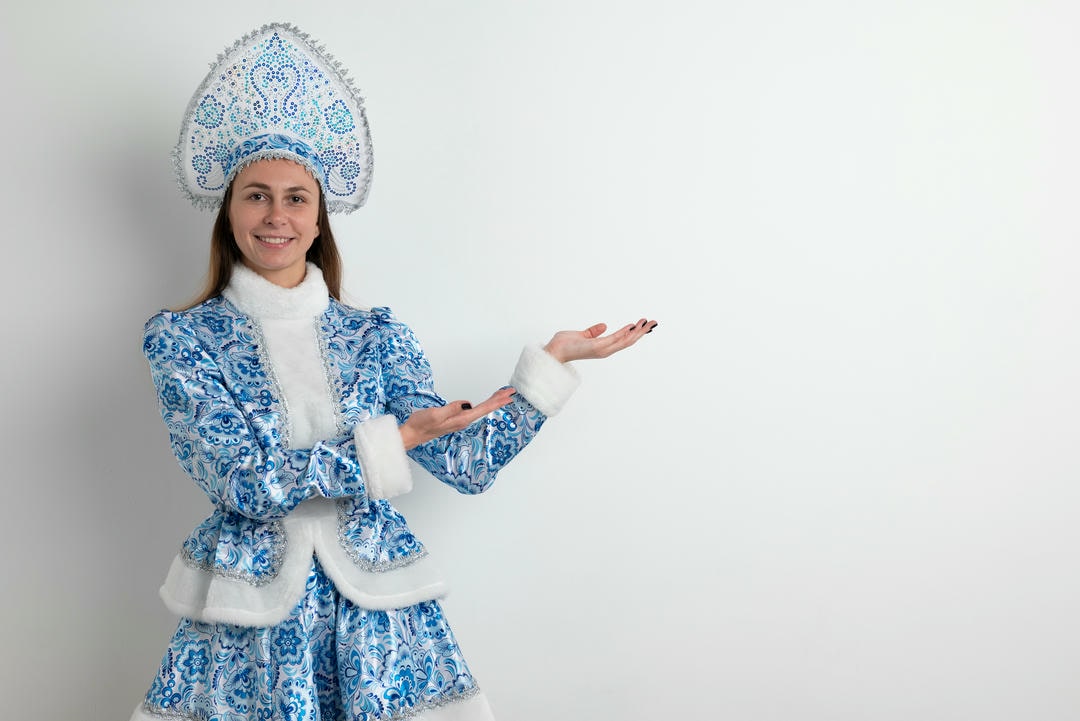
The kokoshnik, a traditional Russian headpiece, serves as a striking emblem of the nation’s rich cultural heritage and artistry.
Characterized by its diverse kokoshnik styles, this headwear reflects significant regional variations, each embodying unique historical influences. The intricate traditional embroidery often featured on these pieces showcases the craftsmanship and storytelling inherent in Russian art.
Beyond mere adornment, the kokoshnik holds cultural significance, symbolizing femininity and status within various social contexts. As a result, it not only highlights the aesthetic sensibilities of its time but also serves as a lens through which to view Russia’s evolving identity through tradition and modernity.Russia’s allure lies not only in its vast expanse and official emblems but also in the rich collection of unofficial symbols that resonate deeply with its people and culture. From the colorful domes of St. Basil’s Cathedral to the warmth of a grandmother’s embrace, these emblems offer a unique perspective on the Russian soul. Exploring these symbols provides a deeper understanding of Russia’s heritage and its lasting impact on the world. As Russia continues to evolve, these iconic representations will persist in captivating and intriguing those who seek to understand this remarkable nation.



